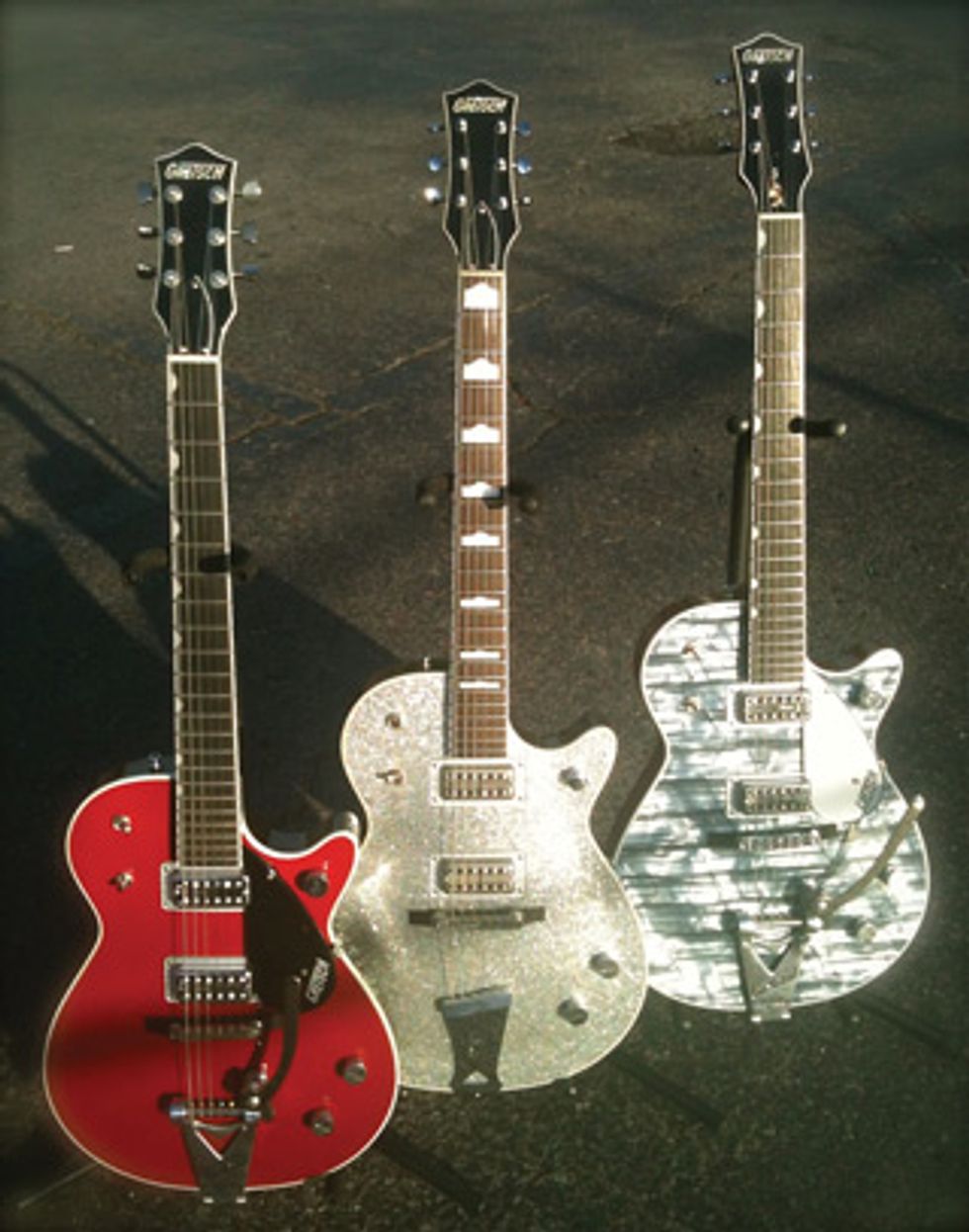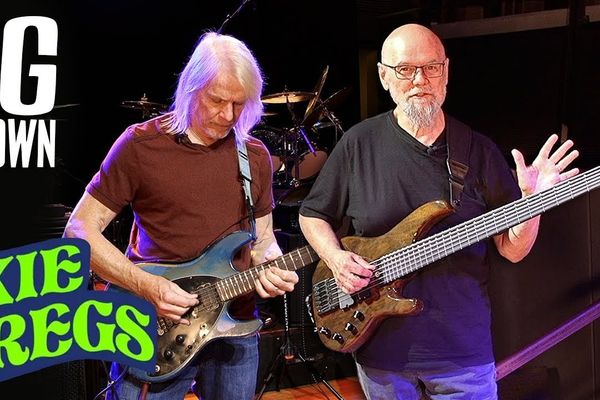The guitar sound of modern country is 70 percent ’70s-style rock and 30 percent twang.

A Gretsch Jet Trio (left to right): Scaling the wall between rock and twang, this Gretsch Power Jet Firebird, Gretsch Silver Jet, and Gretsch Sparkle Jet provide the tones needed for today’s style of country music.
Country music. That’s the twangy stuff where everyone plays Telecasters, wears a cowboy hat, and sings with yodeling-like breaks in their voices, right? This generalization may have been pretty close a couple of decades ago, but the genre has experienced some dramatic shifts in the last 15 years. Just turn on a country radio station playing today’s music and you’ll have a hard time finding the twangy and compressed sound of a Telecaster that ruled the country songs of the ’70s, ’80s, and ’90s. Contemporary country has largely morphed into ’70s rock with some redneck lyrics and fiddle to keep the song from sounding too much like straight-ahead rock.
I’m often asked how much chicken-pickin’ I’m doing on sessions and gigs in Nashville these days, and I’d say it’s about one out of every 50 songs. I’m a big fan of the style, but the reality is that it’s become a bit passé (Brad Paisley is a notable exception—he’s keeping the sound alive but with a progressive twist). For most of those other 49 songs, I’m playing Malcolm Young-type guitar parts and jangly echo patterns.
After spending a lot of time analyzing the most common sounds being used on today’s country records and working in the music community in Nashville for several years, I have arrived at the conclusion that the guitar sound of modern country is 70 percent ’70s-style rock and 30 percent twang. Humbuckers with a vintage voicing can certainly help deliver the rock portion of this equation, but how can the twang be obtained?
The two main roads to Twang City are Telecasters and Gretsches. Though great for twang, the single-coil bridge pickup on a Telecaster doesn’t always deliver the amount of fullness I need for the rock part of the modern-country sound. For me, the perfect blend of humbucker-rock tone and single-coil twang is with a Gretsch guitar outfitted with Filter’Tron pickups (or pickups based on them).
My Gretsch Silver Jet and Sparkle Jet are outfitted with High Sensitive Filter’Trons, whose output is well suited for both sparkly clean and moderately overdriven tones. But if a song calls for a tone with more kick and growl, I’ll pick up my Gretsch Power Jet Firebird with TV Jones Power’Tron pickups, because they have more output than the Filter’Trons. That said, both are sensitive to pick attack—and pickup sensitivity to attack is extremely important when I dial up a modern-country tone. That’s because my amp is set in a manner that allows for clean notes if I pick lightly, or overdriven when I dig in and play hard.
The way your pick contacts the strings and moves through them is one of the biggest factors in your overall tone. When playing modern country, I usually hold my pick tight and rake through the strings with conviction to get a more aggressive tone. (To get a better idea of the type of attack I’m talking about, think about the firm, downward pressure you would use if you were trying to scratch a stubborn splotch off your clothes with a guitar pick.) Using this kind of pick attack also yields a variety of sounds depending on where you strike the strings. Picking closer to the neck will be warmer and cleaner, while digging in more near the bridge will provide a grittier tone with a more pronounced high-end attack. Speaking of picks, I personally prefer the tone and feel of heavier-gauge celluloid picks for getting a variety of tones, but you’ll certainly want to do your own experimenting to find what works best for you.
Current country music often features an amp with a semi-broken-up tonal quality—not too clean and not too dirty. This can be achieved by simply increasing the gain on a clean channel or by reducing the gain on a crunch channel, though I’ve found that the sustain and overall vigor of my tone is more powerful when I push a clean channel. For an example, I’ll dial up the following settings if I’m using my Mesa/Boogie Royal Atlantic’s clean channel for this sound: master at 10 o’clock, bass at 11 o’clock, middle at 3 o’clock, treble at 1 o’clock, and gain at 3 o’clock.
If you still need a bit more gain than what your clean channel can deliver when pushed, a pedal that drives the front end of your amp is a great option. And the Xotic EP Booster is one of the best pedals I’ve used to do this. It doesn’t have any EQ parameters, so the core sound of the amp is maintained while giving me the ability to add more gain at the flick of a switch. At just about the size of a candy bar and boasting only knob, the EP Booster is also nice because it takes up very little real estate on a pedalboard.
Next month, we’ll take a look at some modifications that can be made to acoustic guitars to help maximize creativity and new ideas.

